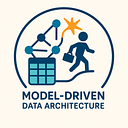Member-only story
Adding Surrogate Keys to Dual SCD2 Tables to Enable PIT Tables in a Data Platform
Lessons from Data Vault: Principles Without the Dogma
“Data Vault isn’t broken — but the way most people implement it is.”
Don’t implement Data Vault literally with Hubs, Links, and Satellites.
The real value lies in its principles: separation of concerns, business key orientation, historization, and agility.
Apply those ideas flexibly in modern architectures (data lakes, streaming, data mesh).
Borrow the principles, skip the dogma.
💡 Not a Medium member? You can read this article for free using this friend link.\
Most teams hear “Data Vault” and think of hubs, links, and satellites. In practice, implementing those physical structures literally often leads to complexity and frustration.
The real value of Data Vault lies in its principles — ideas that remain highly relevant in modern architectures such as data lakes, streaming platforms, and data meshes. By focusing on principles instead of rigid table patterns, you can build a platform that is robust, auditable, and agile.
Here are the key concepts worth keeping — and how to apply them without falling into the HL&S trap.

